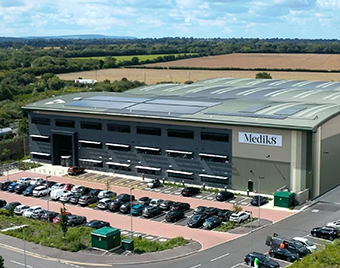Warehouse Robotics – The Ultimate Guide for 2024
In recent years, there has been a significant advancement in robotics technology, particularly in the warehouse industry.
Read More
23.06.2021
In many ways, warehouse optimisation is more critical today than it has ever been. Supply chain disruption is at an all-time high, exacerbated by an increasing quantity of significant geopolitical and environmental events. Uncertainty fuels the need to hold increasing levels of inventory (at a time when warehouse stock is running low), while at the same time, customers are demanding ever-increasing levels of logistical performance. The modern warehouse has to, simultaneously, fit more in, as well as get more out faster and more accurately than ever before. Consequently, the need for an optimised warehouse has never been greater.
Doing so, however, is another problem altogether. At SEC, we believe that the answer is to combine the tactical use of data analysis to create a detailed understanding of the problem so that subsequently, the correct products and technologies can be pulled together into one integrated, holistic solution. Easy to say perhaps, but how do you actually do it? In the short guide below, we’ve provided some steps and tips for getting started on your journey towards optimisation.
The first step to optimising any warehouse or production facility and the primary stage of our own problem-solving process is the most important: to define the actual problem. Engaging high-level stakeholders at this stage is vital both to get buy-in, but also, to ensure you map out the strategic objectives of the warehouse. Never forget that the primary function of a warehouse is to deliver customer service – not to store products.
Once the strategic requirements have been identified, it is then essential to create a sense of the operational challenges. The best method of doing this is to analyse critical performance data such as order profiles, volumetric throughput and product sizes. Armed with this information, each of the following steps become significantly easier.
There are hundreds of types of storage solutions available. Do not get trapped into believing that standard pallet racking is your only option, or that modern technology is unaffordable to you. In our experience, affordable, appropriate technology boosts return-on-investment time considerably. To find out what’s available, spend time researching: visit trade-shows, read good industry magazines and speak to independent industry experts.
This does not mean paying large sums in consultancy fees or being ‘sold’ systems by salespeople with vested interests. Some companies, like SEC, specialise in producing bespoke solutions and neither charge for their services or are chained to any particular storage system.
Do not be afraid to incorporate more than one type of system into an overall scheme, one size rarely fits all, and a good design can seamlessly integrate multiple zones or product types.
With the storage systems selected, put something down onto paper as a starting point and the challenge it. Run your throughputs through it, check that it can store all of your products, ask each operational head to look for flaws or issues. Make sure it doesn’t create bottlenecks or areas of inefficiency. If it does, amend the design accordingly. By going through an iterative design process, you will inevitably end up with an improved solution.
At this point, we at SEC often create digital twins of our proposed solution as by simulating the environment we can identify previously invisible issues and continually improve the design, as well as demonstrating the overall positive effect of the changes. Of course, most businesses don’t possess bespoke warehouse modelling tools like ours; however, spreadsheet models, imitating the solution can be a valuable investment of time.
With your design complete, it should be possible to clearly identify the benefits. At this stage, we will generally look to build a holistic business case, that demonstrates cost-savings, as well as areas of added-value. With a business-case established, the final step is to choose the right implementation partners and make it happen.
Warehouse optimisation is indeed not a trivial task; however, with the correct application of science and expertise, it is one that can have a revolutionary impact on your business. The prize on offer is significant, with increased capacity, efficiency and business resilience common by-products and generally, the return on the investment is rapid (we average 18-24 months). To get started, simply follow the steps above, or alternatively, if you could do with a little more guidance, get in touch with us for a free, no-obligation warehouse optimisation assessment.

In recent years, there has been a significant advancement in robotics technology, particularly in the warehouse industry.
Read MoreHarry Watts of SEC Storage outlines how to achieve strategic alignment in your warehouse, by adopting SEC’s ‘SAVES Cost’ approach.
Read More
In the world of cosmetics, innovation and sustainability are the driving forces that push boundaries and set new standards. In this case study, we delve into a unique project and partnership that exemplifies these principles. Our collaboration with Medik8, a prominent cosmetics company known for its commitment to sustainability, brought together logistics, manufacturing, research and development (R&D), and the supply chain into a cohesive operation. This case study highlights the challenges faced, meticulous planning, effective communication, and the transformative journey that turned discussions into decisive actions.
Watch VideoFor your Commercial Interior, Cleanroom or Warehouse Storage project, contact our experts today to find out how we can transform your business operations.
Unit 11 The iO Centre,
Arlington Business Park,
Stevenage, Hertfordshire,
United Kingdom, SG1 2BD